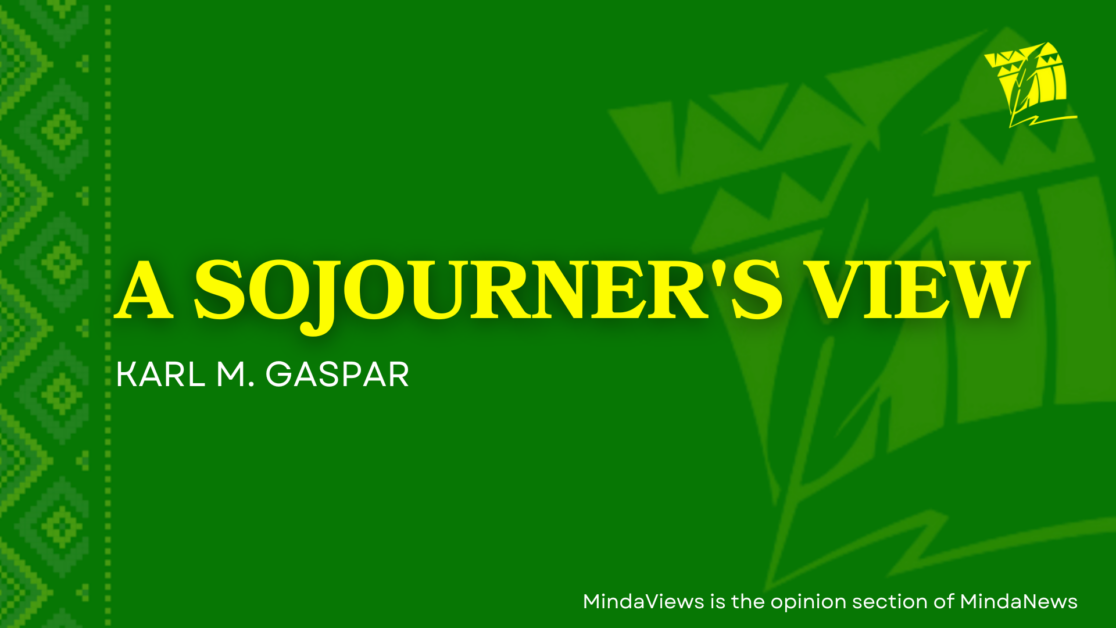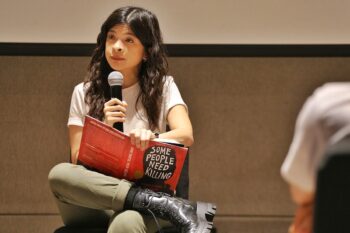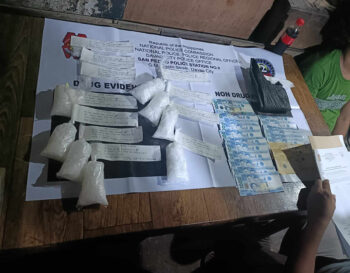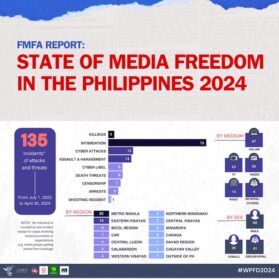
REVIEW: BOOKENDS By Nikki Rivera Gomez APM Digital Commercial Prints & Label, Davao City 2023
CEBU CITY (MindaNews / 8 December) – “Even in writing, I lie to myself saying there is no longer a story, no two words, I’d labor to put together beyond what I’ve already conveyed. The fact of the matter is, if I could, I would write till I drop,” Rafael “Nikki” Rivera Gomez writes in one of the 57 essays that constitute Bookends, his latest published book that will be launched on December 11. 2023 at La Herencia, Davao City.
Before he drops, Gomez would have told so many stories – in words that run the gamut of poetic to magical – in a manner that his countless fans who have followed him through his career as writer would wish him to write forever! The fact of the matter is – if he can convince himself to continue pleasing his countless fans –he will write till he drops!
One can understand that, like so many other writers, Gomez can be quite ambivalent about his writing talent. In another essay he tells his readers: “’Ay, you write pala,’ some people exclaim to me these days, as if writing were a kind of gift. Perhaps it is. But it is bestowed upon the unsuspecting only with the caveat: Embrace the agony of its solitude and be rewarded as only martyrs are. It is that or nothing. And if it’s the latter, then the ability to write becomes a curse. Many times have I vainly tried to embrace this Calvary, only to be cast away by my own inadequacies.”
But Bookends is a blessing indeed, and in this anthology of essays there is no sign that in his ability to write, Gomez is cursed. For there are but few inadequacies that can be gleaned in Bookends. This book, like his many other books, shows that Gomez is “a writer talaga!” And he has shown that he is one of the best non-fiction writers that Mindanao literature has ever produced!
Gomez has authored three other books published by the University of the Philippines Press. First was “Coffee and Dreams on a Late Afternoon: Tales of Despair and Deliverance in Mindanao,” (2005); followed by “Mindanao on My Mind and Other Musings (2013), and; “Through the Years, Gently,” (2019). A true Mindanawon, Gomez has written about anything and everything about Mindanao from the beauty of her landscape to the problems that have bedeviled its multi-ethnic population, from the joys and hopes of its peoples to their struggles and frustrations, from the courage of individuals who have made a difference in people’s lives to situations of war and peace.
In particular, he also writes about the delights that one can find in his beloved Davao. He writes in one essay that “Davao City may be many things to other people. Frontier land. Gateway. Food basket. Melting pot and migrants’ haven. Fruit capital. But for me, it will always be one thing: home. Although born in Manila, I grew up and spent all my adult life here. My youth, from the 1960s to the 1970s, was drenched with soulful vignettes.”
His writing has been honed by his actual coverage of news on the ground, interviews conducted in the field and writing news articles for various publications (the MISSSA and AFRIM publications, various newspapers and news outlets including the defunct San Pedro Express, Sun Star, Mindanews, and the Philippine News Agency). A number of essays in Bookends are reprints from what he wrote for these publications but many were written for his own personal consumption which he now shares to the general public.
In his Introduction to the book, Fermin D. Adriano writes that what is written in this book “practically covers the entire life span of Nikki, from a growing, temperamental, rebellious youth in his early 20s, to his senior years when idealism had been tempered with the mundane realities of existence and when the valuation of happiness shifted from the requirements of “I” to the needs of our loved ones (wife, children, and grandkids).” The length of the essays range from a one-paragraph short reflection to lengthy interviews on various topics covered by the key informants.
Gomez’s works can easily be placed beside those of distinguished American and Filipino essayists (among them Joan Didion, Augusten Burroughs, Conrado de Quiros, Sheila Coronel and so many others). They all write about the complexities of everyday life as they face daunting hurdles as writers and as individuals vis-à-vis how they relate to society, culture, personal relationships and options in life. In the process, through the art of their writing, they engage in the act of self-creation. It is as if they are writing their own self-portraits. In fact, unintentionally with Bookends, even if not following a conventional narrative path and despite its disjointed essays, Gomez wrote a kind of memoirs!
The author allows us to glimpse into his eventful life from his childhood, college days, the years of being an activist engaged with progressive social movements (especially in the work of documentation and news reporting, when he also began writing for his column “Wise or Otherwise,” as well as in the various cultural initiatives from music to theater ), his shift to government service involved in peace and development projects to finally facing the challenges of turning sixty. Through this anthology, the reader gets to view a sweeping panorama of Mindanao and what events shaped the region’s contemporary history from the late 1960s to the turn of the millennium.
Gomez waxes poetic when he wrote about living in the “Age of Aquarius,” when the youthquake across the globe produced the flower power generation. “Everywhere, people were asking questions, speaking out, exploring new ideas. College freshmen were love-hating Anne Bancroft in ‘The Graduate,’ while young, fledgling folk singers clumsily plucked ‘Scarborough Fair’ on their guitars. Fire trucks burned along Bolton St., while seniors read for themselves why ‘Everything You Always Wanted to Know About Sex—But Were Afraid to Ask’ was such a global bestseller. What a time it was.”
There are five sections in this anthology, namely Narratives, People, Lineage, Sentiments and Perseverance. Written between the early 1980s until the beginning of this decade, the essays paint landscapes of varying colors. There are the bright colors when Gomez writes about his joys and hopes. Joys in the company of family (with wife Neng, children Kai and her kids, Kevin and Kiko) and friends, hope in Mindanao’s brighter future if only injustices can be addressed, peace can be sustained and development made more accessible to the vast Mindanawon population.
But there are also dark colors here and there, when Gomez writes about his frustrations, how he faced harrowing events and when good intentions did not produce long-term results beneficial to people. In the process he reveals the core of his personality, his character traits, the values he adheres to, his passions, his favorite cultural symbols (in poetry, songs and books) and varying options he had taken throughout his life.
The book’s emotional center is in “Lineage,” where Gomez traces his genealogical roots (clearly on both sides of his family, he descended from explorers, writers, achievers) and his relationship with his father fraught with angst. He writes that with his old man, the son’s temper made him a hothead and thus “there seemed one chance after another to be mad, to vent it, and to move on to the next flashpoint. It was a fiery ride.” He also dealt with the pain of losing his first grandchild named Miguel Ernesto Gomez Rivero in 2016 (to whom this book is dedicated).
In the section of “People,” Gomez writes about fourteen individuals he had encountered through the decades when he was in the field covering events or intending to profile these individuals. They are quite a mix of people including those he admired most (especially his mentor Freddie Salanga), ordinary folk he met along the way (Mang Jun, the boat skipper and John, the gardener), big and backyard entrepreneurs (Reymundo Manlabe and Jojo Santes) and those who figured in the news (Palparan, the Maneros, and Tabako on one pole and Lean Alejandro and Rene “Tatay” Lumawag on the other pole). Written with deep affection, he also writes about his wife Neng and her foray into fulfilling her dreams. (Her words: “I wouldn’t want to see the day when I’d regret not having given my dream a fair chance.”)
Across the pages of this anthology, the reader gets to meet prominent national and Mindanao-born figures in the field of visual arts (Victoria Edades, Vic Secuya, Jerry Bardoquillo, Anoy Catague), performing arts (Joey Ayala, Al Santos, Agnes Locsin, Ang Bagong Lumad – Bayang Barrios, Popong Landero, Noe Tio and Onie Badiang), journalism (Edith Eco, Carolyn Arguillas, Efren Elbanbuena), lifestyle alternatives (Betsy Ruizo-Gamela), the armed groups (AFP, MNLF, Abu Sayyaf and others) and government service (Presidents Fidel Ramos, Ninoy Aquino and Rudy Duterte; Paul Dominguez and Jesus Dureza). Many of those named in this anthology have become Gomez’ friends. In one essay, he writes how he feels about these friendships: “But I have felt whole and blessed in the company of friends who love their craft, who continue to pursue their calling, and who remain true to their wandering dreams.”
Many readers, especially those of Gomez’s generation, will echo with the words in Adriano’s Introduction: “But when I read the collections of musings from Nikki’s book, … I found them so refreshing and rejuvenating. They reminded me of my humanity as the same feeling of love and connection to family, acquaintances, and friends in the past and the present… I experienced the same in many instances in my life… They were also rejuvenating in the sense that they reminded me of my days of innocence when I dipped my toes in the realms of romanticism and idealism, unperturbed by the realities of a world where pragmatism becomes a convenient modality for survival, even prosperity.”
At present, even as Gomez writes lines like, “The sun rises and the sky explodes in gold,” he asserts that “all these are indeed part of the terrain. Perhaps the key is, and always has been, to allow the good to prevail, to keep our joys simple, and to be grateful for what we have.” And there are many things to be grateful for. In the essay “Tales from the Crypt,” he tells us: “I am grateful for this desire to discern more, inconstant as it is, even as I trivialize the same desire through the constant inadequacy of my words.”
For those of us nostalgic, in the words of Simon and Garfunkel in their song Bookends— “time it was, and what a time it was.. a time of innocence, a time of confidences, long ago it must be..” — Bookends, the book, offers a compilation of “photographs” captured in text, images that have preserved such rich memories, that can all be bequeathed to the next generations.
(MindaViews is the opinion section of MindaNews. Redemptorist Brother Karl Gaspar is Mindanao’s most prolific book author. Gaspar is also a Datu Bago 2018 awardee, the highest honor the Davao City government bestows on its constituents. He is presently based in Cebu City.)







